Procurement is an essential part of any business, as it involves the acquisition of goods & services needed for the smooth operation of the organization. It is an important function that plays a vital role in the success of any business. Streamlining procurement processes is crucial for businesses to ensure that they are cost-effective, efficient, & timely.
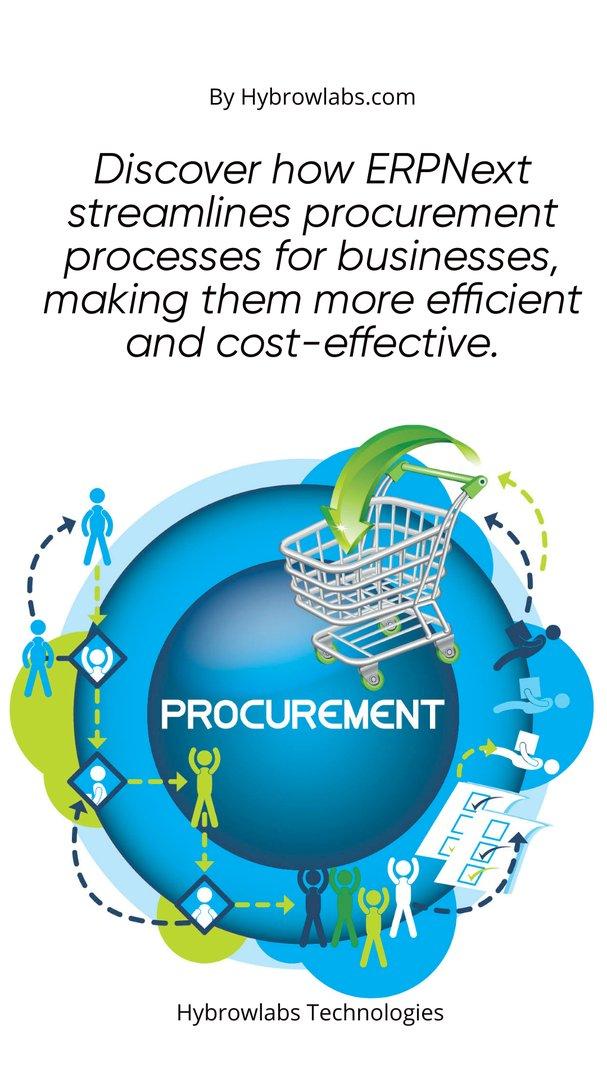
One way to achieve this is by using Enterprise Resource Planning (ERP) software such as ERPNext. ERPNext is a software solution that provides an integrated approach to managing different aspects of a business, including procurement management.
In this article, we will explore how ERPNext can help streamline procurement processes in businesses. We will discuss the features & benefits of the software, as well as how it can improve procurement efficiency & cost-effectiveness.
Breaking down the workflow of the ERPNext Procurement Module:
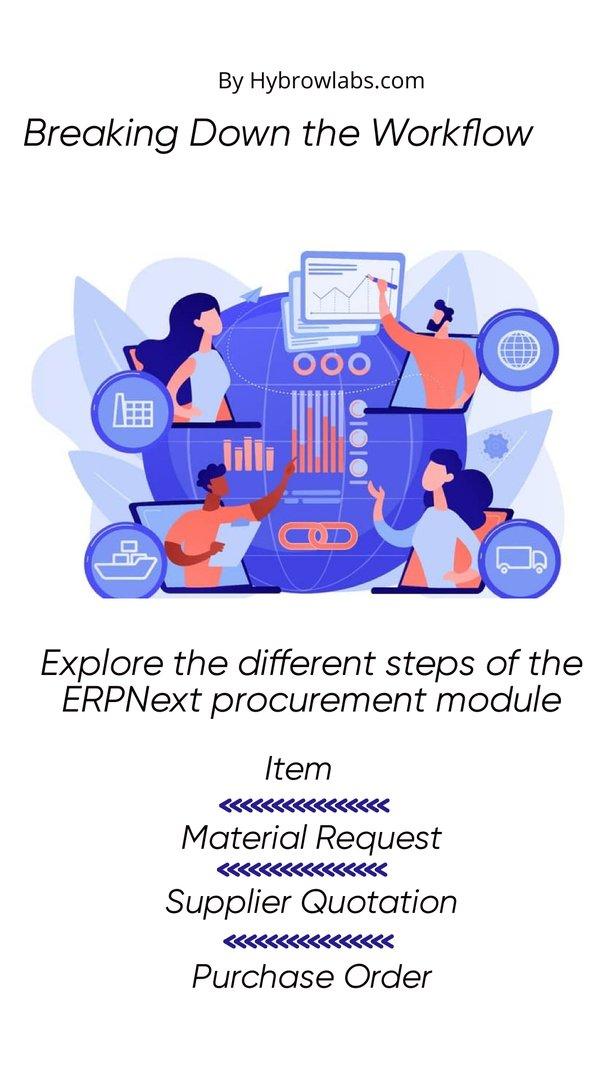
ERPNext's procurement module is designed to simplify the procurement process by providing a streamlined & integrated approach to managing procurement-related activities. Here's a detailed breakdown of the workflow within the ERPNext procurement module.
1. Item:
The first step in the procurement process is to create an item. The item represents the product or service that the business needs to procure. The item contains essential information such as the item code, description, unit of measure, & price.
2. Material Request (Purchase):
The material request (purchase) is a document that initiates the procurement process. This document can be created by any department within the organization, & it contains information such as the item required, the quantity needed, & the required delivery date.
3. Supplier:
The supplier component within the ERPNext procurement module contains information about all the vendors or suppliers from whom the business can procure items. Each supplier record includes information such as the supplier code, name, address, & contact details.
4. Request for Quotation:
Once the material request (purchase) is created, the business can then send out a request for quotation (RFQ) to suppliers for the items needed. The RFQ document contains information about the item required, quantity, & delivery date.
5. Supplier Quotation:
Suppliers receive the RFQ & respond with a quotation. The supplier quotation contains details such as the unit price, taxes, delivery charges, & other charges associated with the item.
6. Purchase Order:
Once the business has received & reviewed the supplier quotations, it can then create a purchase order (PO) for the selected supplier. The purchase order contains details such as the supplier, the items ordered, the quantity, the price, & the delivery date.
- Purchase order trends: Through this report, the trends for purchase orders for a given financial year can be visualized. The trend can be grouped based on Suppliers, Supplier Group, Item, Item Group, & Project.
- Purchase analysis: Through the Purchase Analytics report, the purchase-related data against the supplier, supplier groups, items, & item group can be analyzed over a given period & frequency.
- Purchase Order Analysis: This report is helpful in analyzing the items & their billing status in a purchase order over a given period.
By using the ERPNext procurement module, businesses can streamline the procurement process & automate many of the manual tasks associated with procurement. This leads to more efficient procurement processes, reduced costs, & increased productivity.
Tips for Setting up a purchase management workflow:
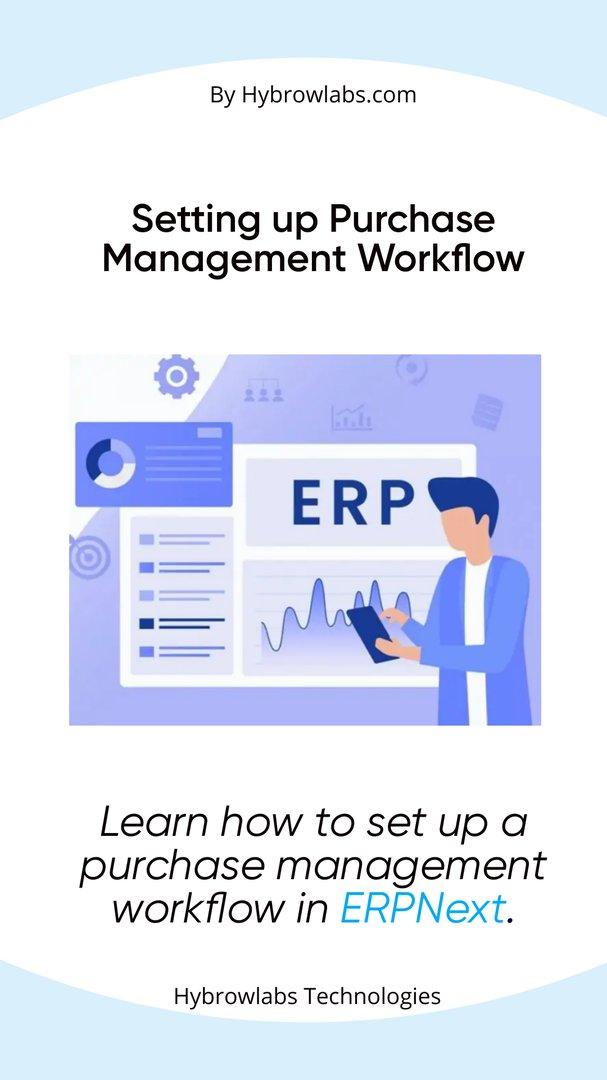
Here are some tips for setting up a successful purchase management workflow:
1. Define the purchasing process:
Start by defining the purchasing process from start to finish. Identify the key steps involved in the process, including requisition, approval, ordering, receiving, and payment. This will help you create a comprehensive workflow that covers all aspects of the purchasing process.
2. Identify roles and responsibilities:
Clearly define the roles and responsibilities of everyone involved in the purchasing process. This includes the requisitioner, approver, purchasing agent, receiving agent, and accounts payable. Make sure everyone understands their role in the process and what is expected of them.
3. Develop purchasing policies and procedures:
Develop policies and procedures that outline how purchases should be made, what types of purchases require approval, and how purchasing requests should be submitted. This will help ensure that purchases are made in accordance with company policies and procedures.
4. Choose a purchasing system:
Choose a purchasing system that meets the needs of your organization. This could be a simple spreadsheet or a more sophisticated purchasing software system. The system should allow for easy tracking of purchase orders, approvals, and payments.
5. Set up approval workflows:
Set up approval workflows that automatically route purchase requests to the appropriate approver based on predefined criteria such as the amount of the purchase or the department making the request. This will help ensure that purchases are approved quickly and efficiently.
6. Track purchases:
Set up a system for tracking purchases from requisition to payment. This will help you identify any bottlenecks or delays in the process and make adjustments as needed.
7. Monitor and analyze purchasing data:
Use purchasing data to monitor spending trends and identify areas where cost savings can be realized. This will help you make data-driven decisions about purchasing and improve the overall efficiency of the purchasing process.
How ERPNext can help to automate procurement processes:
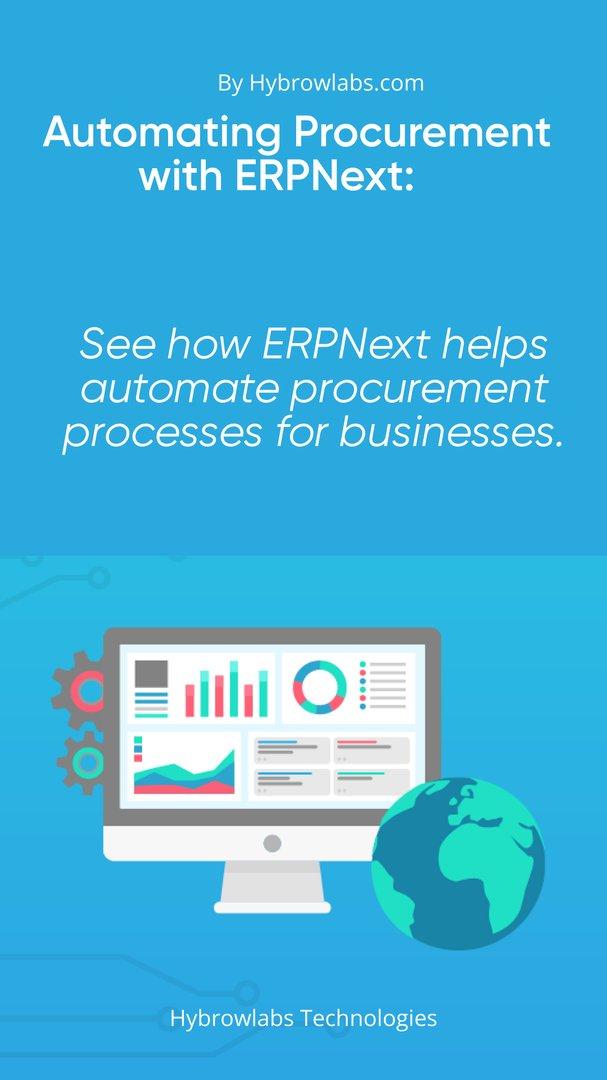
Here are some ways ERPNext can help to automate procurement processes:
1. Centralized Procurement Management:
ERPNext provides a centralized platform for managing procurement processes. This means that businesses can track all procurement-related activities, including purchase orders, invoices, & supplier information, in one place.
2. Automated Workflows:
ERPNext automates the procurement process by creating workflows for each step. This automation ensures that requests, approvals, & notifications are sent to the right people at the right time, reducing manual intervention & improving efficiency.
3. Supplier Management:
ERPNext provides businesses with a supplier management system that includes supplier registration, qualification, & rating. This system ensures that businesses only work with reliable suppliers & can easily manage supplier relationships.
4. Real-time Data Analysis:
ERPNext provides real-time data analysis, allowing businesses to track procurement costs & performance. With this feature, businesses can make data-driven decisions & optimize procurement processes for better performance & cost-effectiveness.
Benefits of using ERPNext for procurement management:
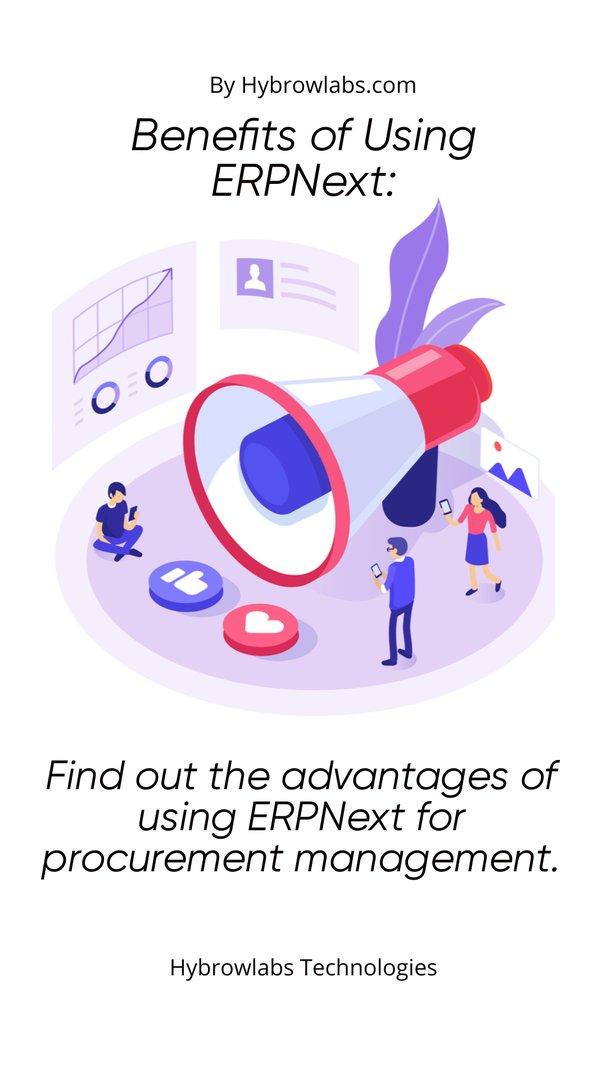
1. Cost Savings:
ERPNext helps businesses reduce procurement costs by automating tasks, improving supplier management, & providing real-time data analysis. This automation reduces manual intervention, eliminating errors & saving time.
2. Increased Efficiency:
ERPNext streamlines procurement processes, allowing businesses to manage procurement activities more efficiently. This leads to faster delivery times, reduced lead times, & improve overall procurement performance.
3. Improved Collaboration:
ERPNext provides a centralized platform for managing procurement and improving collaboration between teams & suppliers. This ensures that everyone has access to the same information, reducing communication errors & increasing transparency.
Examples of How businesses have streamlined their procurement processes with ERPNext:
1. Electronics Manufacturer:
An electronics manufacturer used ERPNext to automate procurement processes & improve supplier management. They reduced manual intervention, improved supplier selection, & increased transparency, resulting in a 25% reduction in procurement costs.
2. Food Distributor:
A food distributor used ERPNext to streamline procurement processes & improve efficiency. The automated workflows, improved collaboration between teams, & implemented real-time data analysis, resulting in a 20% reduction in lead times & a 30% increase in on-time delivery.
Conclusion:
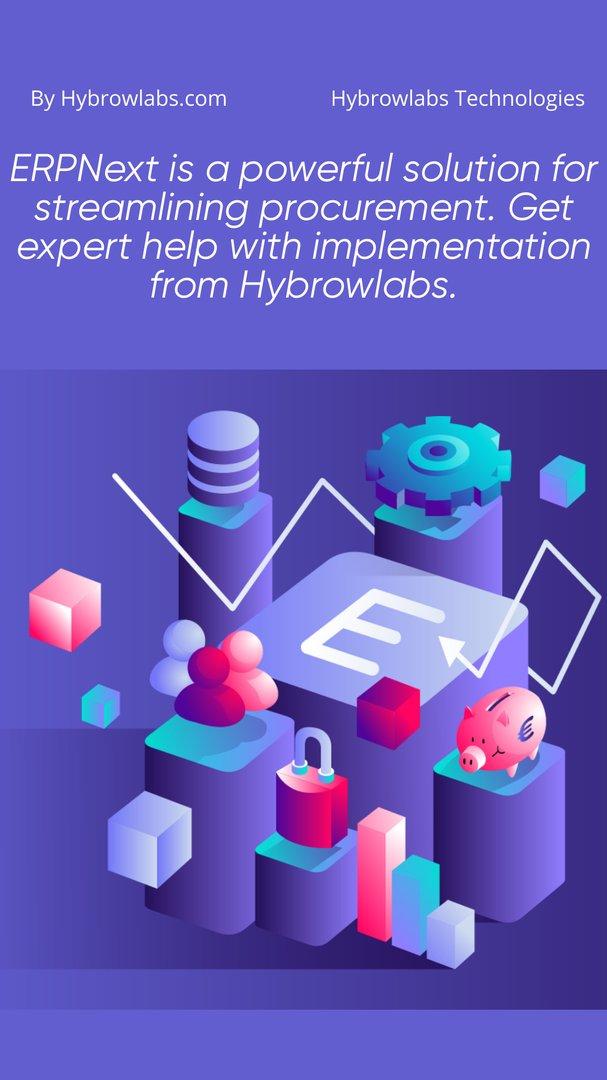
ERPNext is an excellent solution for businesses looking to streamline procurement processes, as it can help reduce costs, improve efficiency, and enhance collaboration. If you are considering implementing ERPNext for your procurement management needs, Hybrowlabs can help you streamline your procurement processes efficiently. With their specialized services, such as Hybrowlabs ERPNext Development Services and Hybrowlabs Manufacturing ERPNext Services, you can be confident that your procurement processes are optimized for cost savings, efficiency, and improved supplier management.
FAQ:
1. What is ERPNext, & how does it help with procurement processes?
ERPNext is an open-source ERP software solution that provides a centralized platform for managing procurement activities. It can automate workflows, improve supplier management, & provide real-time data analysis, leading to cost savings, increased efficiency, & improved collaboration with suppliers.
2. What are the key features of the procurement module in ERPNext?
The procurement module in ERPNext includes features such as material request management, supplier management, request for quotation management, purchase order management, & automated workflows.
3. Can ERPNext integrate with other software solutions?
Yes, ERPNext can integrate with other software solutions, such as accounting software, CRM software, & inventory management software.
4. How long does it take to implement ERPNext for procurement management?
The time it takes to implement ERPNext for procurement management varies depending on the size & complexity of your business. However, with the help of an experienced ERPNext implementation partner, such as Hybrowlabs, the process can be completed efficiently.
5. What are the benefits of using ERPNext for procurement management?
The benefits of using ERPNext for procurement management include cost savings, increased efficiency, improved collaboration with suppliers, real-time data analysis, & streamlined workflows.



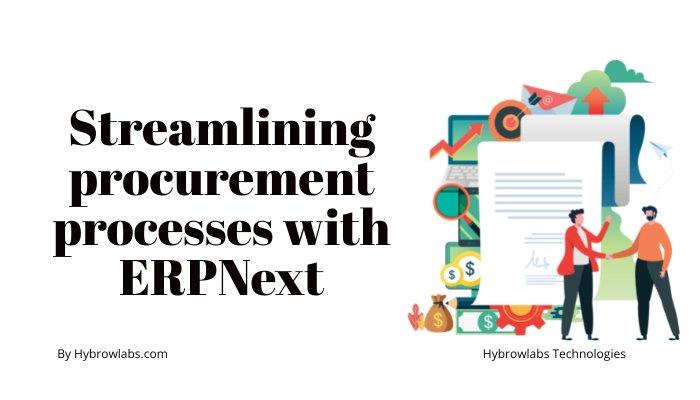


a3dc85.jpg)
.jpg)
fd8f11.png)

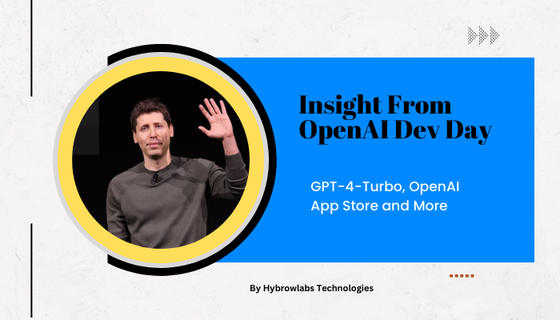
.jpg)
.jpg)